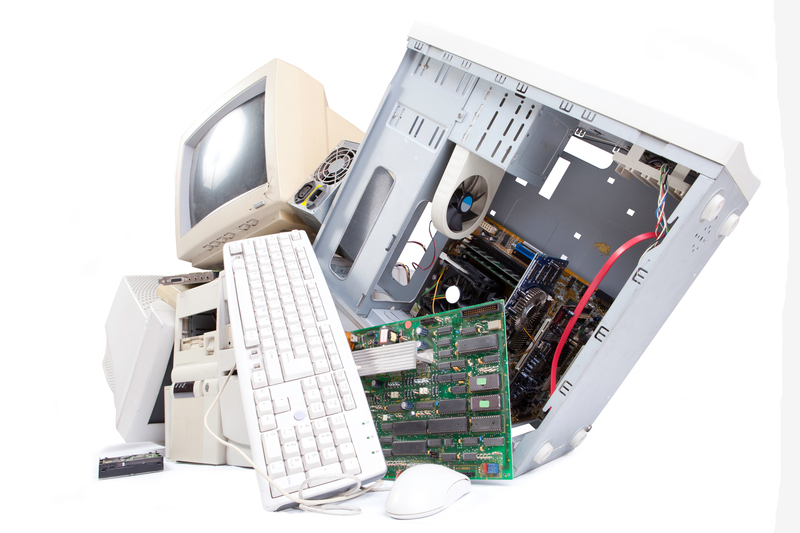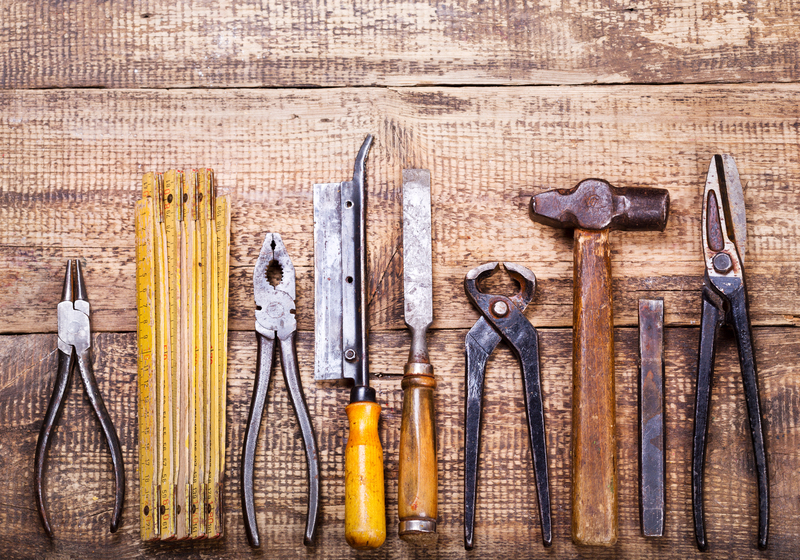Discover the Art of Upcycling: Transforming Old into Gold
Are you ready to unlock creativity, sustainability, and savings? Upcycling -- the innovative process of turning old, unused, or discarded items into valuable treasures -- is rapidly growing in popularity worldwide. This transformative art form goes beyond simple recycling by giving items a new purpose and a fresh aesthetic. In this comprehensive guide, we'll delve into the world of upcycling, explore its many benefits, and offer practical tips, ideas, and inspiration for turning the old into gold in your everyday life.
What is Upcycling? A Brief Overview
Upcycling, often referred to as creative reuse, involves reimagining and repurposing waste materials or unwanted products into new, higher-value items. Unlike recycling, which usually breaks down materials to create something new, upcycling preserves much of the original material, reducing energy consumption and environmental impact.
- Upcycling breathes new life into items otherwise destined for landfills.
- It encourages sustainable living by minimizing raw material usage.
- Creative upcycling fosters personal expression and originality.

Why Upcycle? Top Benefits of Transforming Old Items
1. Environmental Impact
Upcycling reduces waste and carbon footprints by keeping usable materials out of landfills. By transforming old products into something valuable, you conserve resources and help reduce pollution associated with manufacturing and disposing of new goods.
2. Encouraging Creativity and Personalization
The art of creative upcycling allows you to infuse your style and imagination into each project. You're not just repurposing old items; you are creating something unique, functional, and tailored to your tastes.
3. Saving Money and Adding Value
Transforming old items into functional or decorative pieces often costs far less than purchasing new ones. Upcycling can also add value -- both emotional and financial -- to items that might otherwise be discarded.
4. Building New Skills
Learning the techniques of upcycling expands your DIY capabilities, from woodworking and painting to sewing and metalwork. Over time, you'll gain skills that empower you to tackle larger, more ambitious projects.
Popular Upcycling Project Ideas
The possibilities for upcycling are endless. Whether you're a seasoned crafter or a curious beginner, there's a project to match your interests and skill level. Here are some inspiring ways to turn the old into gold:
- Furniture Upcycling: Transform worn-out chairs, tables, or cabinets into statement pieces with a fresh coat of paint, new hardware, or fabric covers.
- Clothing and Fabric Upcycling: Convert old jeans into trendy bags, patchwork quilts, or cushion covers.
- Home Decor Upcycling: Reimagine glass jars as chic storage containers or decorative vases; use wine corks for bulletin boards or coasters.
- Tech and Electronics Upcycling: Repurpose outdated gadgets into quirky clocks, lamps, or charging stations.
- Creative Art Projects: Turn scrap wood, metal, or cardboard into wall art, sculptures, or jewelry holders.
With every project, you're not just reducing waste -- you're turning old items into gold both functionally and aesthetically!
How to Start Upcycling: A Step-By-Step Guide
-
Identify Items for Upcycling
Walk through your home and take stock of unused or broken items. Consider their materials, size, and current condition -- sometimes, what looks like junk could be the foundation for your next masterpiece!
-
Find Inspiration and Ideas
Search online, flip through magazines, or visit thrift stores and flea markets. Sites like Pinterest, Instagram, and YouTube teem with creative upcycling tutorials and project showcases.
-
Gather Tools and Materials
Depending on your project, you may need basic supplies: paints, brushes, glue, screws, nails, fabrics, or a sewing machine. Ensure you have the right tools for safe and efficient crafting.
-
Plan Your Project
Sketch designs, create a materials list, and outline each step. Planning minimizes mistakes and ensures you have all you need before you begin.
-
Start Creating
Begin the transformation! Take your time, experiment with textures and colors, and remember, there's no right or wrong way to upcycle. The journey is as important as the finished product.
Essential Tools and Materials for Upcycling
To embark on your upcycling adventures, assemble a toolkit with some must-have supplies:
- Paints and Brushes: For wooden furniture, glassware, or metal objects.
- Glue and Adhesives: Choose the right glue for projects involving paper, fabric, or mixed materials.
- Screwdrivers, Pliers, and Hammers: Basic hand tools are handy for deconstruction and assembly.
- Sewing Kit or Machine: Indispensable for fabric-based upcycling.
- Sandpaper and Polishing Tools: To prep surfaces for painting or refinishing.
- Protective Gear: Gloves, goggles, and masks for safety.
Tip: Always match your tools to your project and prioritize safety in every step.
Tips for Success: Mastering the Art of Upcycling
- Start Small: Begin with easy projects to build confidence before tackling more complex pieces.
- Embrace Imperfection: The beauty of upcycling lies in the unique, sometimes rustic appearance of finished items.
- Practice Sustainability: Source materials locally and use eco-friendly paints or finishes wherever possible.
- Share and Collaborate: Join local workshops, online communities, or swap meets to trade tips and resources.
- Document Your Journey: Taking before-and-after photos can inspire others and help track your progress as an upcycling artist.
Upcycling vs. Recycling: What's the Difference?
While both upcycling and recycling divert waste from landfills, they differ significantly in process and outcomes:
- Recycling breaks down materials (like glass, paper, or plastic) to create raw material for new products. This often requires energy-intensive processes.
- Upcycling creatively repurposes whole items or their parts without degrading the material's value.
The result? Upcycling typically requires less energy, produces fewer emissions, and results in one-of-a-kind products with a personal touch.
Unique Upcycling Transformations: Real-Life Examples
Old Suitcases to Vintage Storage
Breathe new life into old suitcases by transforming them into retro side tables, pet beds, or charming storage bins. A fresh coat of chalk paint and new handles can instantly modernize these finds.
Pallets to Garden Furniture
Wooden pallets, often thrown away after deliveries, can be upcycled into coffee tables, outdoor couches, or even vertical gardens. Sand down the wood, secure with screws, and add cushions for comfort.
Jars and Bottles to Decorative Pieces
Don't toss those glass jars and bottles! Wrap them in twine, paint with vibrant colors, or fill them with fairy lights for unique vases or lanterns that brighten any space.
The Future of Upcycling: Trends and Innovations
The movement to transform old items into gold is influencing everything from fashion to architecture. Notable trends include:
- Upcycled Fashion: Designers are increasingly incorporating pre-loved textiles into high-fashion collections.
- Tech and Smart Gadgets: Makers worldwide are turning e-waste into innovative tech projects -- such as custom keyboards or smart home devices.
- Art Installations: Artists are using scrap materials to construct large-scale public art, challenging perceptions about waste and beauty.
- Community Initiatives: Tool libraries, repair cafes, and swap shops promote collaborative upcycling at the local level.
By embracing these new directions, anyone can become part of the global movement to turn the old into gold through upcycling.
Getting Children Involved: Upcycling for All Ages
Fostering an upcycling mindset in children helps inspire the next generation of eco-conscious creators. Kids love transforming bottles into flowerpots, t-shirts into tote bags, or cereal boxes into organizers.
- Simple crafts encourage imagination, problem-solving, and respect for the environment.
- Family upcycling projects build teamwork and lasting memories.
- Educational benefits: Children learn about sustainability and resourcefulness.
With guidance and safety precautions, upcycling is a fun, hands-on activity for all ages.

Where to Find Upcycling Resources
Whether you're searching for supplies or inspiration, explore these resources:
- Online platforms: Pinterest, YouTube, and upcycling blogs for tutorials and guides.
- Local thrift stores and flea markets: Hunt for upcyclable treasures at bargain prices.
- Community workshops and makerspaces: Learn new skills and collaborate on projects.
- Upcycling books: Visit your library for books packed with project ideas and practical advice.
Conclusion: Upcycle Your Way to a Greener, More Creative World
The art of upcycling is more than just a trend--it's a sustainable lifestyle choice that nurtures creativity, saves money, and helps protect our planet. By transforming the old into gold, you make a personal impact on your surroundings and inspire others to see the hidden potential in everyday items. Whether you're giving a new lease on life to furniture, clothing, or household objects, upcycling offers endless opportunities for innovation and environmental stewardship. So, gather your tools, let your imagination run wild, and join the global movement of turning forgotten treasures into something extraordinary!
